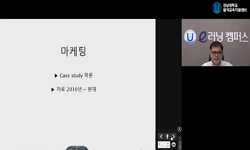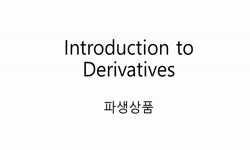In this paper, OTT (Over-The-Top) refers to voice, video and data services that arrive from a third party service provider (SP) and doesn’t require any business or technology affiliations with the network operator (Southwell 2011). Traditional telep...
http://chineseinput.net/에서 pinyin(병음)방식으로 중국어를 변환할 수 있습니다.
변환된 중국어를 복사하여 사용하시면 됩니다.
- 中文 을 입력하시려면 zhongwen을 입력하시고 space를누르시면됩니다.
- 北京 을 입력하시려면 beijing을 입력하시고 space를 누르시면 됩니다.
https://www.riss.kr/link?id=A100255420
- 저자
- 발행기관
- 학술지명
- 권호사항
-
발행연도
2014
-
작성언어
English
- 주제어
-
KDC
325
-
등재정보
01
-
자료형태
학술저널
-
수록면
1892-1893(2쪽)
- 제공처
-
0
상세조회 -
0
다운로드
부가정보
다국어 초록 (Multilingual Abstract)
In this paper, OTT (Over-The-Top) refers to voice, video and data services that arrive from a third party service provider (SP) and doesn’t require any business or technology affiliations with the network operator (Southwell 2011). Traditional telephone companies (telcos) are under big threat from OTT messaging applications which have been splitting flow of text message and voice from the former. Even though, mobile operators still enjoy some asymmetric advantages by controlling the basic telecommunications infrastructure, monitoring the network usage and distinguishing between different OTT actors (Bertin et al. 2011). From a market structure perspective, mobile telecoms industry with the entrance of OTT messaging applications is analogous to the traditional dual-channel structure. On one hand, mobile operators “sell” communication services such as SMS and voice directly to subscribers; on the other hand, they “wholesale” the network infrastructure to OTT SPs on which OTT applications distribute text, picture, video and voice for end users. Extant research has extensively examined the channel selection, channel competition and coordination in traditional sectors (Cai 2010; Cattani et al. 2006; Chiang et al. 2003; Dumrongsir et al. 2008). However, the explanation of dual channel might not be well applicable to the mobile operator and OTT issue considering some new features in the industry. 1) comparing with traditional product distribution, the mobile operators are selling “the right to use the network”, thus they could both charge the “access” and “usage” fee. 2) unlike the traditional retailing channel where consumers make payments to retailer, consumers using OTT would pay network usage fee (data fee) to the mobile operator. 3) traditional retailors earn their profits by selling products with a higher price than the wholesale price. However, OTT services aim to develop their own business after accumulation of sufficient quantities of users, such as revenues form ads, traffic guidance and so on. This paper is conducted to analyze the pricing strategy of mobile operators facing the challenge of OTT. For simplicity, we assume a monopoly market, namely one mobile operator provide network infrastructure for one OTT messaging service provider who provides communication service for consumers. Based on dynamic game theory, we show that: firstly, under non-cooperative strategy, a mobile operator should charge OTT a positive network access fee which is positively correlated to OTT platform’s future commercial value and direct communication service price, and negatively correlated to indirect communication service; secondly, under cooperative strategy, a mobile operator and OTT could create a more joint profit than that under non-cooperative strategy. The platform access fee that the joint venture charges end users is negatively correlated with OTT platform future commercial value; thirdly, despite the choice of cooperative or non-cooperative strategy, the price of direct communication products has a negative correlation with OTT platform future commercial value and a positive correlation with the platform quality; while the price of indirect communication products is positively correlated with platform future commercial value and is negatively correlated with OTT platform quality. Finally, we conclude with a discussion of the managerial implications for mobile operators and OTT SPs. With regard to policy makers, we suggest that a convenient cooperation environment should be provided, because both mobile operator and OTT SP would obtain a high profit under cooperative condition than that under non-cooperative condition and at the same time consumers could also enjoy a better welfare. This study was supported by the National Natural Science Foundation of China (71172011 and 71272160) and NCET-12-0772.
동일학술지(권/호) 다른 논문
-
COUNTRY OF ORIGIN AND BRAND IMAGE EFFECTS ON GAME EVALUATIONS
- 글로벌지식마케팅경영학회
- Sang Jin Kim
- 2014
- 01
-
GAME MARKETING FROM PONG TO LEAGUE OF LEGENDS
- 글로벌지식마케팅경영학회
- Yuri Seo
- 2014
- 01
-
DOES ENTREPRENEURIAL MARKETING MATTER?
- 글로벌지식마케팅경영학회
- Reynaldo Dannecker Cunha
- 2014
- 01
-
- 글로벌지식마케팅경영학회
- Joonheui Bae
- 2014
- 01





 코리아스칼라
코리아스칼라




